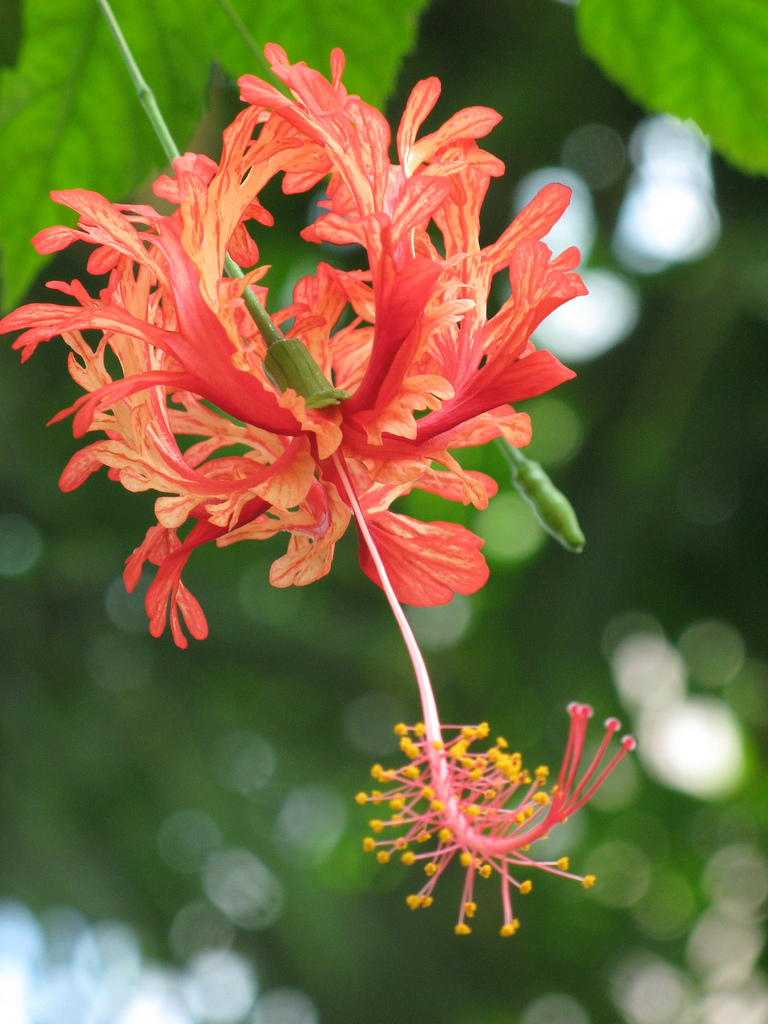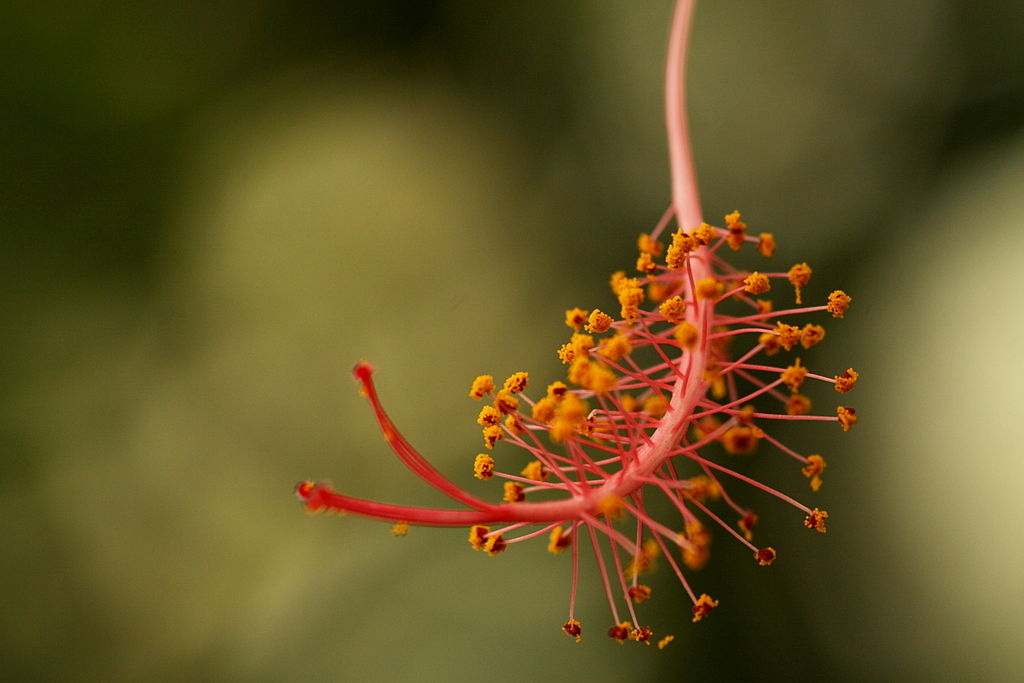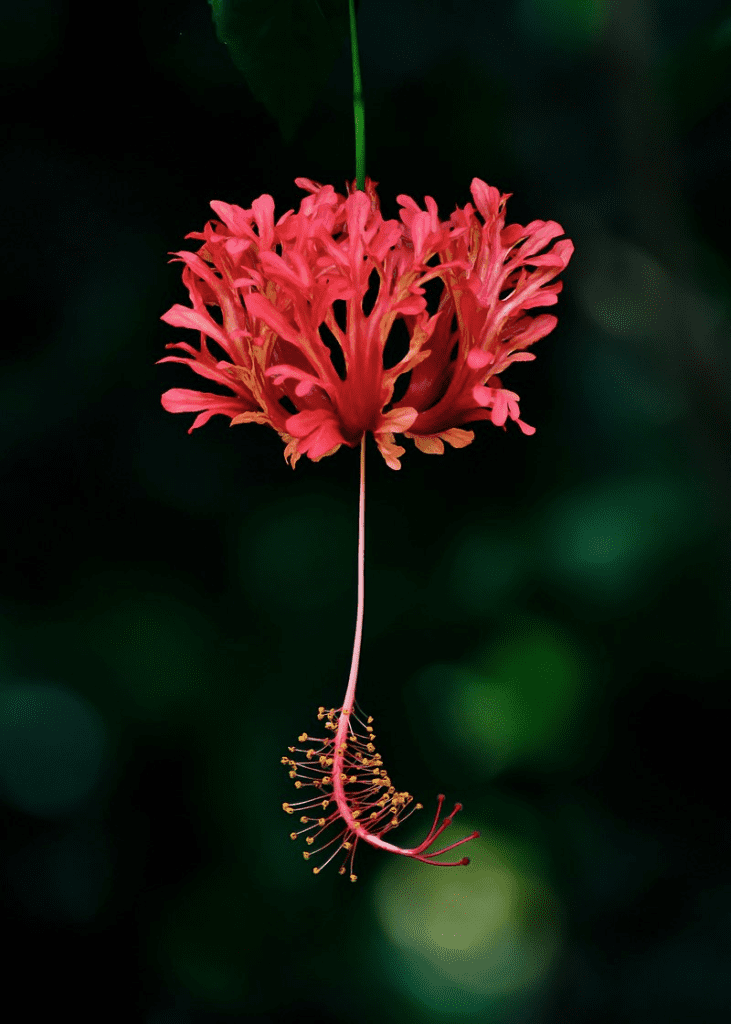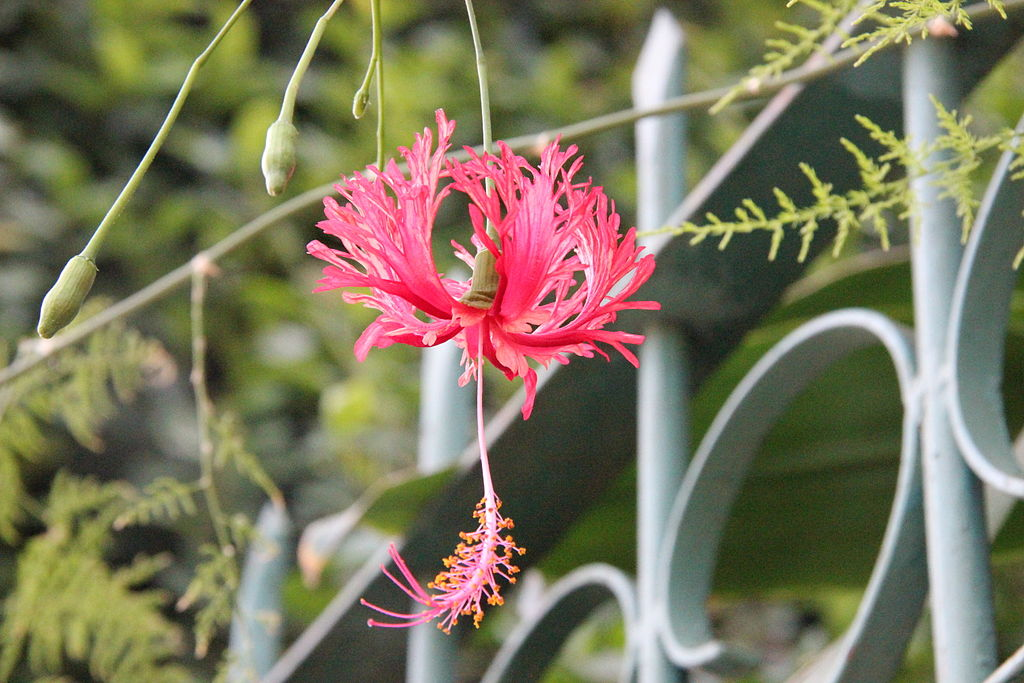
Hibiscus schizopetalus is a species of Hibiscus native to tropical eastern Africa in Kenya, Tanzania and Mozambique. Its common names include fringed rosemallow, Japanese lantern, coral hibiscus, and spider hibiscus.
- USDA, NRCS (n.d.). “Hibiscus schizopetalus“. The PLANTS Database (plants.usda.gov). Greensboro, North Carolina: National Plant Data Team. Retrieved 14 May 2015.
Description
Hibiscus schizopetalus is a shrub growing to 3 metres (9.8 ft) tall.
The red or pink flowers are very distinctive in their frilly, finely divided petals. Flowers with finely dissected petal have a range of colours, the most common being the red form (Keena et al., 2002; Ng, 2006). Leaves resemble those of H. rosa-sinensis.
- “Hibiscus schizopetalus“. Germplasm Resources Information Network (GRIN). Agricultural Research Service (ARS), United States Department of Agriculture (USDA). Retrieved 14 January 2018.
- Huxley, A., ed. (1992). New RHS Dictionary of Gardening. Macmillan ISBN 0-333-47494-5.
The major anthocyanin found in flowers of H. schizopetalus is cyanidin-3-sambusophoroside (Lowry, 1976). From leaves, two new triterpene esters have been isolated (Jose & Vijayan, 2006). Anthocyanins have been used in organic solar cells because of their ability to convert light energy into electrical energy. The many benefits to using dye-sensitized solar cells instead of traditional p-n junction silicon cells, include lower purity requirements and abundance of component materials, as well as the fact that they may be produced on flexible substrates, making them amenable to roll-to-roll printing processes. Anthocyanins fluoresce, enabling a tool for plant cell research to allow live cell imaging without a requirement for other fluorophores. Anthocyanin production may be engineered into genetically-modified materials to enable their identification visually.
- Cherepy, Nerine J.; Smestad, Greg P.; Grätzel, Michael; Zhang, Jin Z. (1997). “Ultrafast Electron Injection: Implications for a Photoelectrochemical Cell Utilizing an Anthocyanin Dye-Sensitized TiO
2 Nanocrystalline Electrode” (PDF). The Journal of Physical Chemistry B. 101 (45): 9342–51. doi:10.1021/jp972197w. - Grätzel, Michael (October 2003). “Dye-sensitized solar cells”. Journal of Photochemistry and Photobiology. 4 (2): 145–53. doi:10.1016/S1389-5567(03)00026-1.
- Wiltshire EJ; Collings DA (October 2009). “New dynamics in an old friend: dynamic tubular vacuoles radiate through the cortical cytoplasm of red onion epidermal cells”. Plant & Cell Physiology. 50 (10): 1826–39. doi:10.1093/pcp/pcp124. PMID 19762337.
- Kovinich, N; Saleem, A; Rintoul, TL; et al. (August 2012). “Coloring genetically modified soybean grains with anthocyanins by suppression of the proanthocyanidin genes ANR1 and ANR2”. Transgenic Res. 21 (4): 757–71. doi:10.1007/s11248-011-9566-y. PMID 22083247. S2CID 15957685.
Uses
Cultivation
Hibiscus schizopetalus is cultivated as an ornamental plant, for use in tropical and subtropical gardens. In temperate climates it does not tolerate temperatures below 10 °C (50 °F) (RHS hardiness rating H1B); but can be placed outside during the summer months, in a sheltered spot with full sun, in alkaline or neutral soil. It has received the Royal Horticultural Society‘s Award of Garden Merit.
- “Hibiscus schizopetalus“. RHS. Retrieved 28 June 2021.
Gallery



References
- USDA, NRCS (n.d.). “Hibiscus schizopetalus“. The PLANTS Database (plants.usda.gov). Greensboro, North Carolina: National Plant Data Team. Retrieved 14 May 2015.
- “Hibiscus schizopetalus“. Germplasm Resources Information Network (GRIN). Agricultural Research Service (ARS), United States Department of Agriculture (USDA). Retrieved 14 January 2018.
- Huxley, A., ed. (1992). New RHS Dictionary of Gardening. Macmillan ISBN 0-333-47494-5.
- “Hibiscus schizopetalus“. RHS. Retrieved 28 June 2021.
External links
Wikimedia Commons has media related to Hibiscus schizopetalus.
- Jose, E.A. & Vijayan, K.K. (2006). “New taraxerane esters from Hibiscus schizopetalus leaves”. Indian Journal of Chemistry, Section B Organic and Medicinal Chemistry 45(5): 1328–1331.
- Keena, C., Yanker-Hansen, K., Marcos Capelini, M. (2002). “Marvellous mallows”. http://www.internationalhibiscussociety.org/hiv1n11-1.htm#1.
- Lowry, J.B. (1976). “Floral anthocyanins of some Malesian Hibiscus species”. Phytochemistry 15: 1395–1396.
- Ng, F.S.P. 2006. “Tropical Horticulture and Gardening”. Clearwater Publications, Kuala Lumpur, Malaysia. 361 pp.
- Data related to Hibiscus schizopetalus at Wikispecies
Leave a Reply